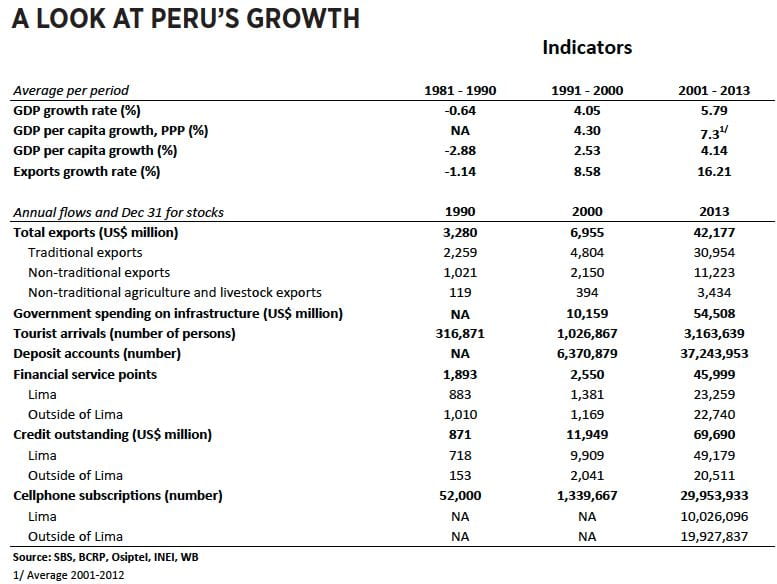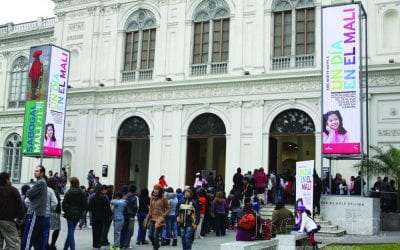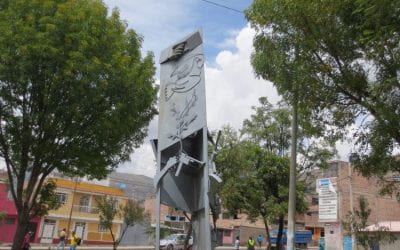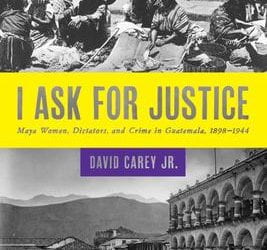An Andean Puma Reaches Out
For Broad-Based Economic Growth
Something major has happened to Peru’s economic growth in the 21st century. Previously characterized by high inflation, recurrent balance of payments problems, endemic un- and under-employment, poverty and inequality problems, Peru has transitioned into an Asian-style economic success. Measured in international purchasing power dollars, its per capita income has increased 117 percent, from US$5,440 in 2001 to $11,805 in 2012. At the same time, poverty dropped from 54 percent in 2001 to 24 percent in 2013. The country has accumulated an impressive fiscal surplus, and US$65.7 billion of foreign exchange reserves. All this has taken place under an increasingly vigorous democracy. What is the explanation? And what are the prospects of continuation along the same lines in the future?
The Underlying Drivers of Recent Peruvian Economic Growth
When there is as major a break in the growth performance of an economy as Peru has had, it is worth looking beyond the conventional elements of economic policy to identify the underlying factors that produced such a major change. Five such elements can be identified for Peru.
First: a firm export orientation was adopted. For the first time since the 1950s, Peru has seriously implemented an export-oriented growth strategy. The timing was opportune: China has been growing by leaps and bounds, generating growing demand for Peru’s minerals and some of its agroexports. But opportunity is not enough; in order to benefit, you have to have the right policy. Peru has been talking export growth and actually implementing the talk. Between 2001 and the present, Peru has signed 21 free trade agreements. The United States, the European Union and China are the major counterparties. But other countries such as Canada, neighboring Latin American countries and ASEAN are all relevant markets for this relatively small economy.
In addition to dismantling trade barriers to its exports, Peru has maintained an almost constant real exchange rate by accumulating exchange reserves rather than letting the rate appreciate. Export profitability was thereby protected.
Second: Predictability in the economy was dramatically improved. Peruvian entrepreneurs have traditionally had to cope with an unstable policy environment which rewarded maintaining flexibility and spending effort on trying to anticipate economic policy changes. President Alejandro Toledo (2001-2006) inaugurated a significant shift in this respect: macro policy became remarkably predictable. As a result, businesspeople spent more time managing their businesses and less trying to anticipate policy changes or lobbying the economics ministry. The reorientation of entrepreneurial effort had a predictable result: productivity went up! It also made it more sensible to invest in the time-consuming effort of developing export markets.
Third: economic horizons lengthened as a result of stable macro policy and lack of policy surprises. This was reinforced by the introduction of an active domestic government bond market complete with brokers obligated to make and maintain a market in these bonds. By 2002, Peru was issuing 10-year bonds, and by 2010, 40-year bonds. The longer horizons reduced the annual profit required to make a venture profitable. When the desired payback period is one year, one needs to earn 100 percent on capital, at two years it falls roughly to 50 percent, at five years to 20 percent and at ten years, you need to recover 10 percent per year (holding aside compounding). It follows that a longer horizon is equivalent to a cost reduction. Put another way, a longer horizon is equivalent to a real devaluation. In turn, a real devaluation makes exports more competitive.
Another consequence of lengthened horizons is that the yield curve of investment becomes more favorable to longer gestation period projects. Mangos, for instance, take three years to produce a crop. Coffee takes five and hydrodams take at least eight. Short horizons preclude such projects. Furthermore, small and medium businesses usually face significantly higher interest rates, and as a result they are screened out of long gestation period projects. But it is precisely small and medium agriculture that can provide better employment opportunities and improve poverty and income distribution indices. Thus the lengthening of horizons not only produced an export boost but also a turn towards a production structure that favors the poor and those who live in rural areas.
Fourth: agricultural enterprises became credit worthy. Agriculture and rural activity have been at a significant disadvantage in terms of credit worthiness since the 1970s agrarian reform of the left-wing Velasco government. This began to change as modern business people migrated from mining, industry and trade into industrial agriculture. These individuals had established credit histories so when they moved into agriculture, they brought financing with them. As a result, credit for the countryside became available.
At the same time, Peru’s microcredit system greatly expanded. Based on the Cajas Municipales de Ahorro y Crédito, municipal banks patterned after the German Spaarkassen, the CMACs provided credit to businesses growing up around the major agroexport enterprises, as well as to some small growers. That allowed the weaving of a credit texture to underpin regional and small city economic expansion.
Fifth: absence of cost increases due to wage push. One of the remarkable features of Peru’s growth in this period is that double-digit growth occurred with virtually no inflation. What price increase there was resulted mostly from imported food and fuel inflation.
One simple explanation involves the weakening of the Peruvian labor legislation and unions during the 1990s as a consequence of the economic reforms introduced under the regime of President Alberto Fujimori. However, at least two-thirds of the Peruvian labor force works in the so-called “informal sector” where neither labor legislation nor unions are very relevant. A more plausible explanation holds that, in the informal sector, incomes are generated by a mix of wage labor and self-employment, with participants acting fundamentally as target income achievers. That is, labor suppliers will demand a wage determined by a target income and their expectation of how many units of labor they will sell. Such an interpretation of the labor market works well, in a market that clears well short of full employment. Then, it acts as a mechanism for work sharing through a market adjustment mechanism described many years ago by Edward Chamberlin, in his classic work The Theory of Monopolistic Competition (1933). Entry, exit, excess capacity (underemployment) and forward-falling supply curves all play a role here, as do migration from hired labor to microentrepreneurship to sell differentiated products, and an increased informalization of additional sectors as more traditional parts of the economy become saturated with underemployed individuals. The operative effect of this structure of the labor market is that wages tend to fall with output or at least do not rise until underemployment is absorbed, so growth can proceed without inflation. On another level, wage stability reinforces export-oriented growth, since it facilitates the maintenance of a competitive real exchange rate. In this sense, it is the counterpart of the reduction in the cost of capital brought about by the lengthening of horizons.
It should also be noted that informality is not equivalent to illegality. The former is a form of market organization, while the latter is economic activity in violation of established laws, such as when mining or logging operates without the required licenses and violates environmental or conservation rules. There may naturally be an overlap, but it is important to maintain the distinction. Illegal operations can be repressed with better enforcement of the laws. Informal production cannot be effectively repressed; it can only be absorbed as the demand for labor expands to the point where target incomes are no longer the determinant of the supply price of labor.
As can be seen, all five elements worked to reinforce each other producing an effective break with the patterns of the past.
Assuring International Competitiveness for the Future
With Chinese growth slowing down and the markets for minerals becoming less lucrative, Peru’s future growth will depend to a greater extent on its ability to effectuate systematic improvements in its competitiveness. The ever-present danger of Dutch disease—the tendency of a resource-rich economy to develop an exchange rate that makes producing things other than raw materials uncompetitive—must be countered with a policy directed to containing or reducing the costs of domestic inputs.
In such considerations, transport infrastructure is key. Not only are domestic freight costs a crucial input into every price, but given Peru’s geography, a continued opening up of the hinterland to market-oriented production depends critically on the availability of good roads. Freight costs function for domestic trade as tariffs do on international flows. The equivalent of free trade domestically depends on low freight costs. Moving from diesel- and gasoline- based transport to natural gas is one policy that would help in this direction. Another is the increased use of the two existing railroads (Central and Southern) for the transport of mining and agricultural products, so as to relieve the congestion of penetration roads.
Risk is another dimension of cost. Therefore, developments in insurance and other risk containing mechanisms are important in maintaining long term competitiveness. Peru currently has its first insurance reform underway since 1902. Consumer protection has been updated; competitive bidding for some insurance contracts has become compulsory and standardization of contracts has begun. New insurance companies have entered the Peruvian market, making prices and products more competitive.
At the same time, socioeconomic conflict management has become a major policy concern as mining and logging companies face opposition from their local neighbors. The resulting conflicts have the potential of imposing costs not only on the direct participants in the conflicts but on numerous third parties, including significant portions of the financial community. Prevention in this context is highly preferable to requiring companies to set aside moneys for potential losses into accounting provisions. Peru is introducing financial regulations that enlist the banks in an effort to improve corporate due diligence in abating these conflicts. The resulting reduction in risk should make Peru an even more attractive site for mining investments.
Reducing costs of finance is another way of lowering the costs of domestic inputs. Lowering financial transaction costs is within reach via the development of cellphone banking on a level playing field, with full interconnectedness and interoperability between all banks and telecoms. This will have enormous implications for the economic integration of the hinterland.
Additionally, risk evaluation on micro credit and consumer credit can be made more effective and less costly by the application of modern psychometric techniques, which are able to quantify integrity (willingness to pay) and entrepreneurial ability (capacity to pay).
The increased availability of finance by connecting institutional savings of private retirement funds more directly to productive business investment is a further element in the same direction.
The future goes beyond the technological developments of cellphones and modern psychometric techniques. One example of the way in which technology can be harnessed is Peru’s acquisition of its own satellite. This satellite inaugurates a new epoch in the effectiveness of public management. With “eyes in the sky,” it becomes possible to effectively enforce fishing licenses, to monitor public works and pay by reliably measured progress, to identify urban sprawl and levy the appropriate taxes, to identify avalanches as they form and prevent road blockages, along with many more improvements in administration and productivity.
Maintaining, or better yet, increasing international competitiveness needs to be a daily occupation in a growing economy. Peru’s growth over the last decade and a half shows what can happen when productivity and competitiveness take a jump. Fortunately, the forces at work are still operative and new sources of competitiveness and productivity growth are on the horizon. All told, the Andean Puma is bounding with energy and can be expected to continue to do well.
Fall 2014, Volume XIV, Number 1
Daniel M. Schydlowsky is the Superintendent of Banks, Insurance Companies and Private Pension Fund Administrators, Republic of Peru. He was the DRCLAS 2009-2010 Robert F. Kennedy Visiting Professor and later a Fellow at the Mossavar-Rahmani Center for Business and Government at the Harvard Kennedy School.
Related Articles
The Violence of the VIP Boxes
English + Español
In Peru, the upper class does not like to mix with those they consider different or inferior. Their maids on the beaches south of Lima are not allowed to swim in club pools and, sometimes, not even in the ocean. The VIP boxes at sports and theater events maintained by the government are a public display of a private practice that reproduces in the public sphere the worst aspect of private hierarchical structuring.
Peace and Reconciliation
English + Español
Eleven years have gone by since the Peruvian Truth and Reconciliation Commission presented its final report. The report reconstructed the history of many cases of massacres, tortures, murders and other serious crimes. At the same time, it contributed an interpretation of the…
I Ask for Justice: Maya Women, Dictators, and Crime in Guatemala, 1898–1944
On May 10, 2013, General Efraín Ríos Montt sat before a packed courtroom in Guatemala City listening to a three-judge panel convict him of genocide and crimes against humanity. The conviction, which mandated an 80-year prison sentence for the octogenarian, followed five weeks of hearings that included testimony by more than 90 survivors from the Ixil region of the department of El Quiché, experts from a range of academic fields, and military officials.





